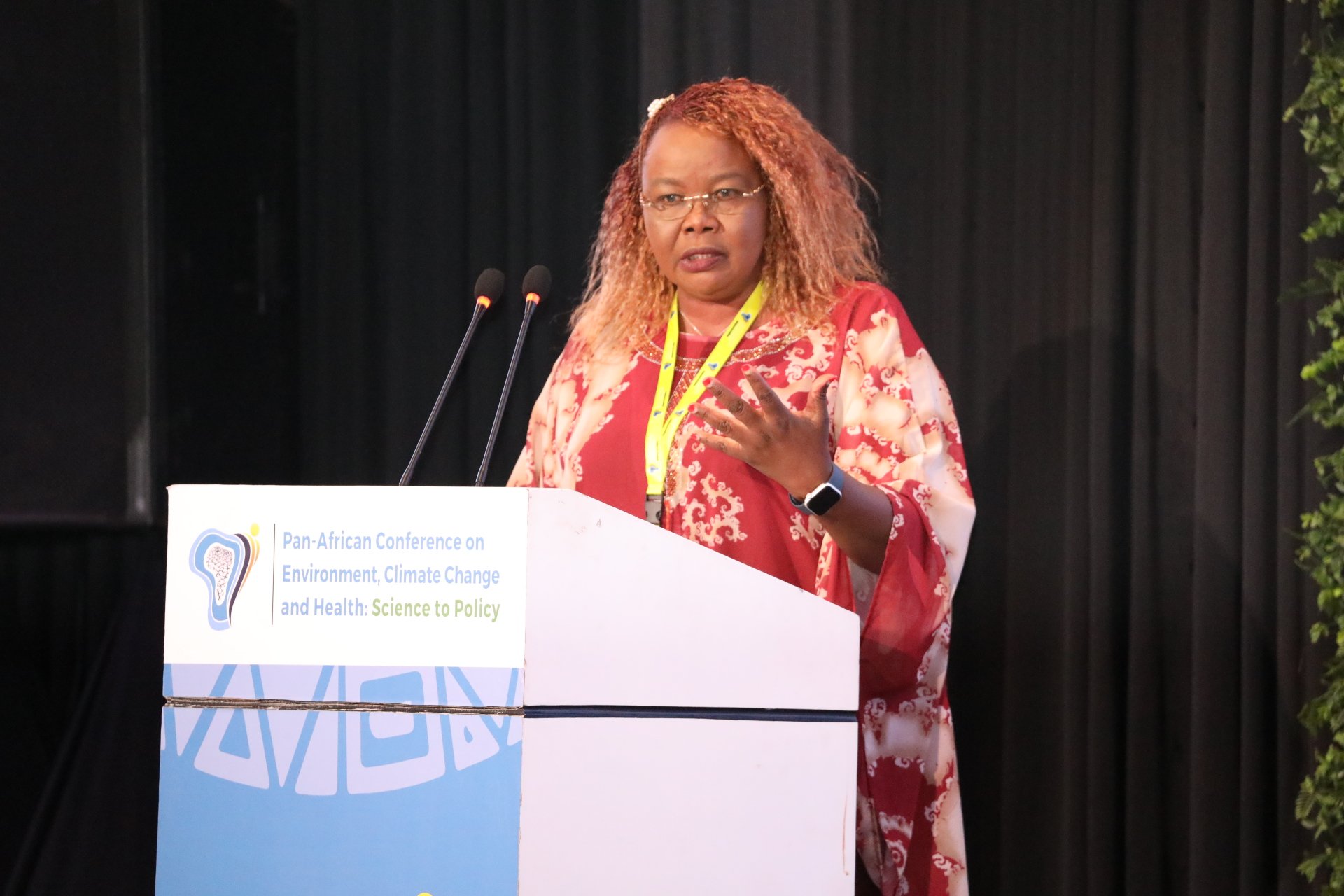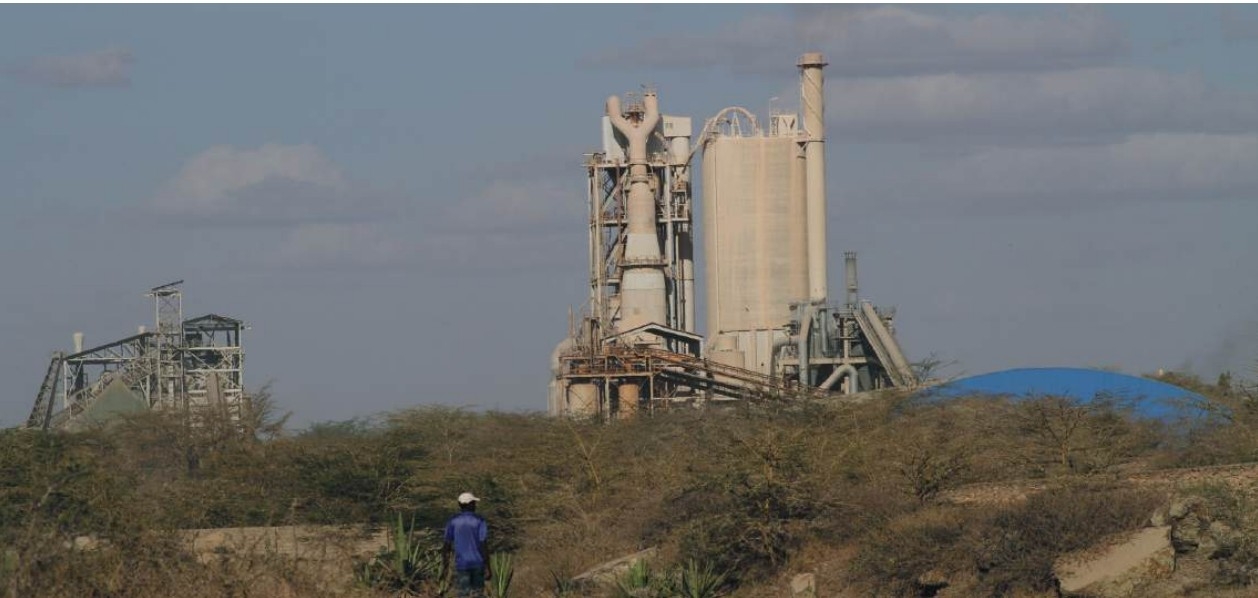
Nema Board Member Loice Kipkiror during plenary session at the Pan Africa conference.
There were over 26,000 deaths in the country last year
attributed to hazardous air pollution, the Kenya Medical Research Institute has
revealed.
The institute warns that the number will rise without
interventions.
In fact, the statistics shared by the institute during
Pan-African Conference on Environment, Climate Change and Health: Science to
policy shows that the figures are rising.
In 2016, 16,000
deaths were attributed to hazardous air pollution.
This climbed to
21,000 deaths in 2019.
Kemri research officer Gohole Arthur said over 90 per cent
of schools and 76 per cent of households rely on polluting fuels.
Arthur said 11.5 million tonnes of wood are harvested
annually for schools and household kitchens.
"This results to
an equivalent of 20.7 million tonnes of carbon dioxide emitted to the
atmosphere contributing to increased atmospheric warming high levels of two
health damaging household pollutants," Arthur said adding that pollution
levels were three times those set by WHO.
The Pan-African Conference is Africa’s first integrated platform
uniting health, climate and environment leaders to align evidence and policy
action in response to the continent’s interconnected crises.
Arthur was one of the panelists during a plenary titled
'healthy environments for population health'.
Other panelists
included Pushpam Kumar from UNEP, National Environment Management Authority
board members Loice Kipkiror and Amos Andama.
Arthur said there is need for the strengthening of national
air quality monitoring and data collection, the acceleration of the transition
to clean household energy technologies.
He said there is a need for increased policy and funding
prioritisation for hazardous air pollution interventions and the building of
local capacity and foster international collaboration.
He said they have in place some of the initiatives through
its first of its kind air pollution Centre of Excellence.
Experts have been trained in the centre which is a
Sub-Saharan African Centre of Excellence in air pollution monitoring,
prevention and health.
The areas of research
they are working on include health impacts of indoor air pollutants on
vulnerable populations such as children, elderly and individuals with
respiratory conditions.
They are also working on effective ventilation strategies
among others, he said.
Arthur said they are also working on a nationwide baseline
study on levels of indoor air pollution, stoves usage and health-related
outcomes in Kenyan kitchen settings.
He said a baseline surveys and kitchen performance test
among households using firewood, charcoal and kerosene for cooking in Kenya is
completed.
The institute has completed a study that is exploring the
potential benefits of cooking with LPG on the environment, time, costs and
health in informal settlement schools, in Kenya.
Arthur said the evaluation of energy-efficient pots for
household cooking in Kenya has been completed.
He said Sh16 billion is needed to implement Kenya Household
Air Pollution Prevention Strategy 2024-2029.
Arthur cited some of the challenges to include limiting equipment that has lead to restricted ability to collect comprehensive air quality data and support academic research.
“There is limited capacity to conduct air quality training
across counties leading to knowledge gaps among environmental health
practitioners and funding challenges leading to limited progress in expanding
monitoring networks and training programmes,” he said.
Only 2,350 out of 130,000 community health promoters have
been trained on hazardous air pollution, a 1.8 per cent coverage, he said.
Kipkiror said Nema has been undertaking Environmental and Social
Impact Assessment (ESIA) on a number of projects.
Despite ESIA bringing
many benefits, effectiveness in Kenya depends on quality and follow-through,
she said.
An ESIA is a study
that examines a project's potential positive and negative impacts on the
environment and society before it begins.
Nema is the principal government body in Kenya responsible
for managing environmental issues.
Kipkiror said with approval, the mitigation measures may not
always be properly implemented or monitored; a move that makes health benefits
fail to materialise.
She said sometimes health impacts are given less emphasis
than purely environmental ones.
Kipkiror said meaningful public participation is required,
but if communities are inadequately engaged then social/health concerns may be
missed.
“For maximum good, quality of assessment, implementation of
mitigation, project monitoring and strong collaboration with other sectors
including health is key,” she said.
Kipkiror underscored the need for environmental experts to
critically examine Environmental and Social Impact Assessment (ESIA) reports as
key indicators of the state of the environment.
In Kenya the ESIA process is a legal requirement for many
development projects, administered by Nema and must be adhered to.
Andama said Nema will soon embark on testing motor vehicle
that are polluting the environment, adding that the authority has decentralised
its services.
He said the authority has leveraged on technologies, a move
that has seen it win a number of awards in the sector.
Andama emphasised that “we only have one planet, and we must take care of the environment for both current and future generations.”
















